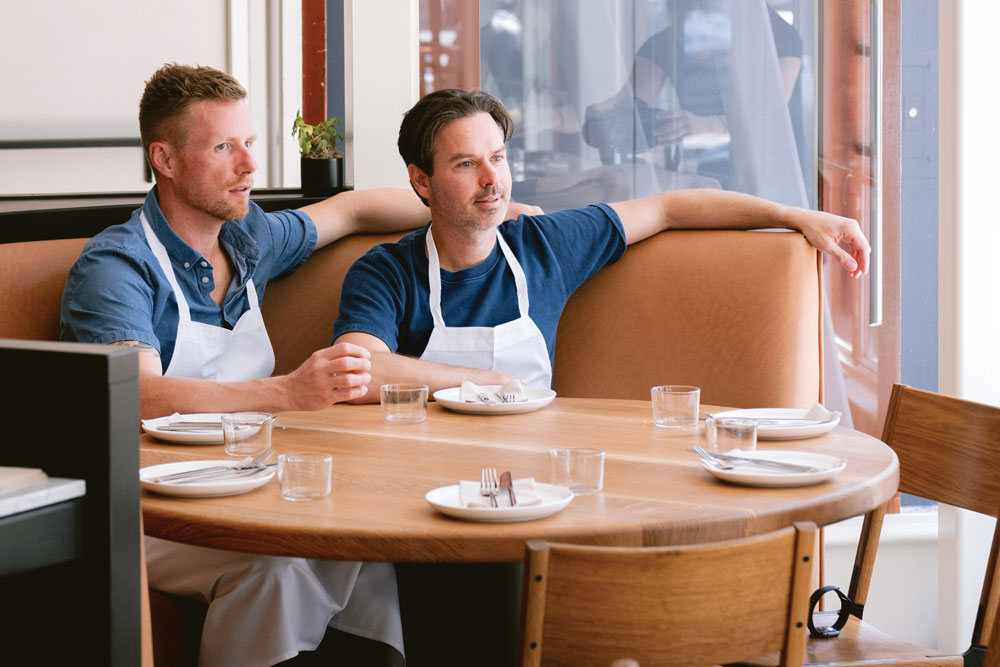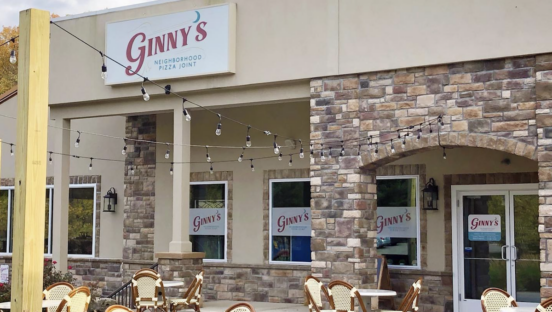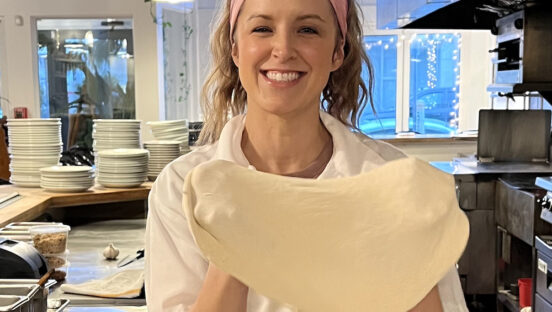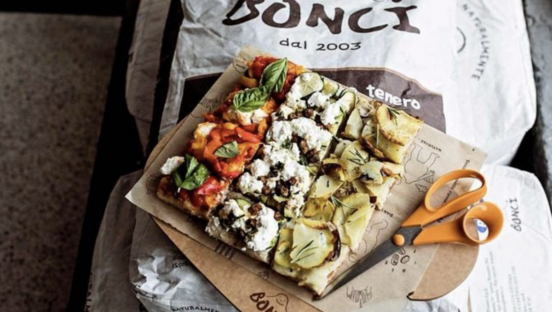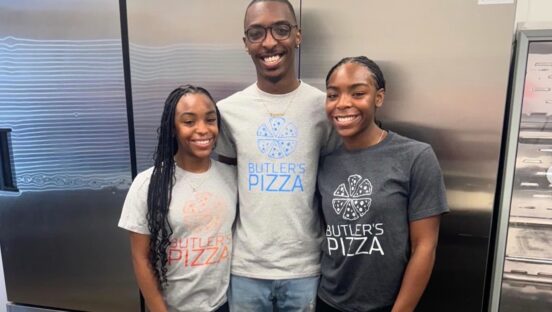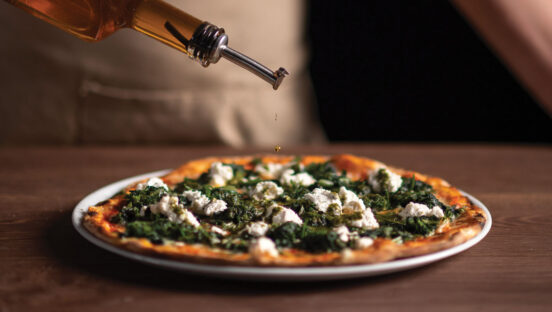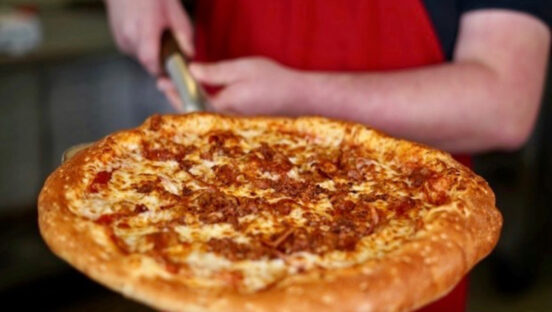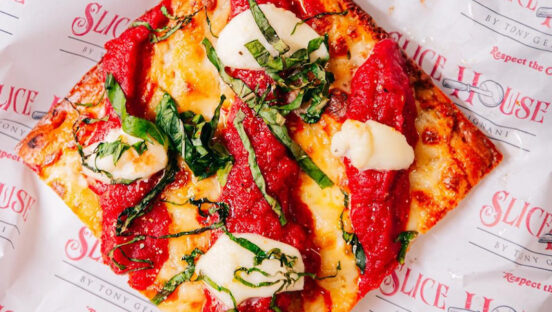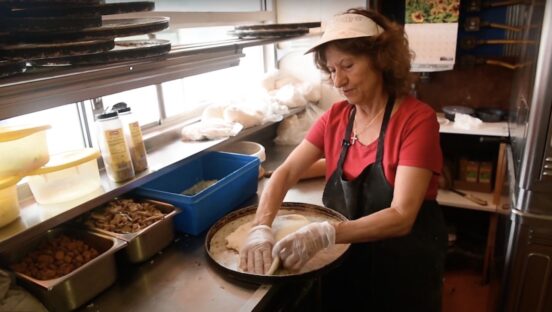By Rick Hynum | Photos courtesy of Flour + Water
In their quest for knowledge about the mysteries of dough, American chefs often find themselves on an extended sojourn in Naples, laboring under the tutelage of an Italian pizzaiolo who rules his kitchen with a stern, if benign, flour-speckled fist. Not so for Thomas McNaughton, co-founder of Flour + Water Pizzeria and Flour + Water Pizza Shop in San Francisco. He was more interested in pasta, and his teachers were all women: the dozen or so Italian ladies who run Bruno e Franco la Salumeria in Bologna.
There, in the salumeria’s bare-bones laboratorio, these “wonderful and charismatic characters” ruled the roost, as McNaughton explained in Flour + Water: Pasta, his cookbook published in 2014. Some were older, old enough to remember the hardscrabble post-WWII era. “They speak softly with an air of authority, often drifting off into dialect, basically acting like the Italian nonna you always imagined, telling winding anecdotes and politely answering your dumb question in that old, Italian matter-of-fact way that makes the question seem even dumber,” McNaughton recounted in his book.

Pasta was their first love, but when they turned their attention to pizza, Pollnow and McNaughton caught on fast.
McNaughton, a New Jersey native, soon found his way back to the States, his young brain stuffed with Old-World dough making wisdom. In San Francisco, he signed on with David Steele to launch Flour + Water, a pasta restaurant that quickly became a dining destination. When fellow chef Ryan Pollnow joined the team in Flour + Water’s second year, the two self-proclaimed “dough nerds” hit it off right away. “We learned that we speak the same language about food and how to treat employees and the style of restaurant—or restaurants, really—that we wanted to create here in the Bay Area,” Pollnow says. “It was a very quick build as far as the relationship goes.”
Related: Pop stars: Who needs a brick-and-mortar store anyway?
But this isn’t a story about pasta bros. McNaughton and Pollnow built their reps on dishes with Italian-accented names like Botte Piccole and Farro Garganelli, but pizza is a language everyone speaks. When they partnered to create Flour + Water Pizzeria and its carryout/quick-service counterpart, Flour + Water Pizza Shop, it was the start of a whole new business venture that has landed them on “best pizzeria” lists around the world.
It’s safe to say McNaughton has made those ladies at the Bologna salumeria proud.
“We wanted to engineer pizza that was unique to us, both in the look and feel of that dough and how it behaves inside the pizzeria and for delivery.”
—Thomas McNaughton
Rethinking Dough for Delivery
McNaughton and Pollnow first started offering a few wood-fired Neapolitan pizzas at the original Flour + Water restaurant while still focusing largely on pasta. From there, McNaughton says, “We started to dream up a more casual pizzeria, and that was the birth of Flour + Water Pizzeria.” The first location, opened in June 2019, was tiny, so they moved across town to a larger venue in late June 2023. But they had to rethink their dough with delivery and carryout in mind.
“I truly love a Neapolitan pizza,” McNaughton says. “But when we were dreaming of a pizzeria, craveability brought us away from Neapolitan as far as what we wanted to produce as a pizza. We wanted it to taste just as good when it’s delivered to your house as it tastes in the pizzeria. And that brought us to this hybrid—we think of it as a New York pizzeria sensibility, but with a high char factor. We wanted to engineer pizza that was unique to us, both in the look and feel of that dough and how it behaves inside the pizzeria and for delivery.”
But there were “a ton of factors” involved, McNaughton admits. “Through a lot of experimentation,” he explains, “we landed on a deck oven, which immediately brought us away from wood-fired. But we still like a high char. We believe very strongly in bulk fermentation and incorporate a poolish into it. And we believe in that deck-oven bake and slowing down the bake time. We’re roughly at a six-minute bake in a 600° oven. We’ve incorporated olive oil into the dough to allow for a little more texture as it bakes. And we like a slow [three- or four-day] fermentation for depth of flavor. We also add what we like to call ‘cheese in the middle.’ Our red-sauce pizzas have a layer of shaved dry mozzarella on the base, then it’s topped with raw-milled tomato sauce, and we put our fresh fior di latte on top of that. That’s a really important step, because that aged cheese allows for a little more oven spring. It doesn’t allow the sauce to get saturated into the dough itself. And then it’s another layer of seasoning. Ryan and I come from chef backgrounds, and we really look at each pizza as we would look at a dish.”

To serve its growing customer base, Flour + Water Pizzeria moved into a 4,000-square-foot space last summer.
But, of course, delivery pizza is a different sort of dish. “When you’re coming up with a new dish as a restaurant chef, you put it through a development stage,” Pollnow says. “You taste it, you sit around with other chefs in the kitchen, and you critique and you tweak and you get it to a point where you’re proud to serve it. For the pizzeria, we had to do that same thing, but with the added layer of, ‘How does it hold up for 30 minutes in a box?’ So when we moved the pizzeria to the new location here, we had a dough that we were really proud of.”
Proud but not quite satisfied, Pollnow recalls. “It was a fantastic product, but, because we constantly question and have this investigative nature toward food, we said, ‘Could this dough be better?’ So we put our base recipe through a round of about 18 different tests. We tested different flour sources and flour types and messed with the hydration level. Once we were happy with the product fresh out of the oven, we put it in that hot-hold environment for 30 or 40 minutes, opened that box back up, then sat around as a group of chefs, saying, ‘Now, how will this taste for someone that would be waiting for delivery in their home?’”
Related: This pizza just broke the world record for cheese toppings
They also custom-designed their own hot-hold cabinets, McNaughton says. “As soon as that pizza comes out of the oven, it hits a stainless-steel rack for 10 seconds, allowing a little heat to be removed from the bottom. That helps with the sog factor. Then it goes into a box that’s held in a cabinet that we helped design.”
In other words, McNaughton adds, “We just like to overthink stuff. That’s all.”
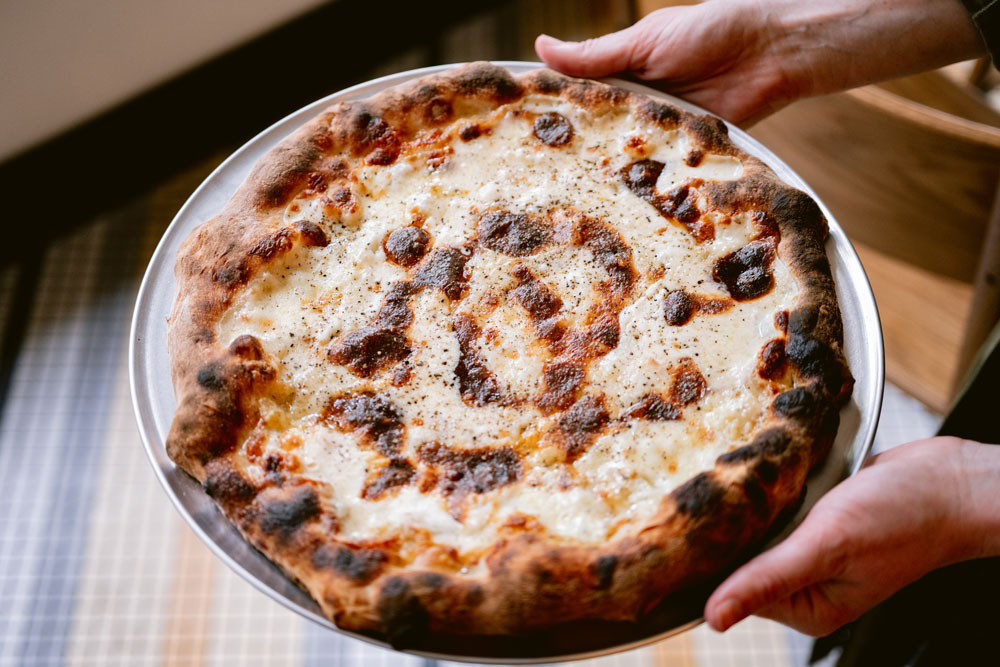
Inspired by the classic pasta dish, the Cacio e Pepe pizza has emerged as one of the most popular menu items at Flour + Water Pizzeria.
A Hub-and-Spoke Model
That “overthinking” has paid off. Flour + Water Pizzeria shows up routinely on “best pizzeria” lists, including one released by TimeOut.com in November 2023 that ranked it at No. 4, topped only by Di Fara Pizza in New York, Frank Pepe Pizzeria Napoletana in New Haven, and Pizzeria Bianco in Phoenix. Last July, Eater San Francisco named it one of the city’s 17 “essential pizzerias,” shouting out pies like the Smoky Eggplant, the Cacio e Pepe and the OG Osso (featuring bone marrow and horseradish). Flour + Water Pizzeria also came in at No. 36 on 50 Top Pizza’s list of the best U.S. pizza shops in 2022.
McNaughton and Pollnow are so happy with their product, they built a glassed-in dough room at the center of the Flour + Water Pizzeria location in North Beach. “Folks having lunch here can see the dough being mixed, portioned and formed,” Pollnow says. “We’re taking what is traditionally hidden away in most pizzeria concepts and [showing it] as the core, the foundation of what we do. We wanted to put that on display in a proud way, because we take the craft very seriously.”
“As soon as that pizza comes out of the oven, it hits a stainless-steel rack for 10 seconds, allowing a little heat to be removed from the bottom. That helps with the sog factor.”
—Thomas McNaughton
McNaughton and Pollnow describe Flour + Water Pizzeria as their flagship location, a 4,000-square-foot space complete with a hostess, servers and a full bar. Housed in the same building, but with a separate entrance, is Flour + Water Pizza Shop, offering quick-service and pizza-to-go options. The dough room serves both operations, but, more importantly, the owners plan to use it as a commissary for additional locations. “It’s like a hub-and-spoke model,” McNaughton says. “We can control all the nuances of the dough and our three- to four-day fermentation process in one location.”
With that model in place, McNaughton and Pollnow plan to open new Flour + Water Pizzeria stores. “We’re currently negotiating leases for other pizza shop locations—think a smaller-footprint QSR version,” McNaughton says. “But we also look at the delivery radius around that pizza shop when we bring it to other Bay Area locations, like East Bay, South Bay and Marin County. Centralizing dough production allows us to evolve so that we can go into smaller 1,500- to 2,000-square-foot spaces. So we’re a little bit more flexible in the size that we can work in.”

Elmer Mejicanos, a well-known San Francisco bartender, designed Flour + Water Pizzeria’s new cocktail program.
“We want to elevate and make any position in our restaurants a job that people should be proud of and can look at as a career.”
—Ryan Pollnow
Helping People Grow
As you’d expect from a California restaurant group, Flour + Water supports the state’s farmers, using a blend of two local organic flours in its dough and buying whole animals to ensure nothing goes to waste. Pollnow estimates that 85% to 90% of their ingredients either originate in Northern California or are imported from Italy.
The Flour + Water restaurant group is progressive in other ways, with a strong emphasis on corporate culture, values and growth opportunities for employees. In addition to a focus on diversity in hiring, Flour + Water offers a 401(k) plan, medical and dental benefits, and yearly arts and education grants to help employees further their education. One of the partners even hosts annual financial planning meetings for team members.

Employees at Flour + Water can take advantage of a 401(k) plan, medical and dental benefits, and annual arts and education grants.
Flour + Water also has its own line of pastas available online nationwide and at 300-plus grocery stores on the West Coast. The consumer packaged goods (CPG) industry is “a radically different business, something that we really had to evolve as operators to understand,” McNaughton says. “It’s quite fascinating, how different it is.”
But, in the long run, McNaughton and Pollnow want to grow a Flour + Water business that’s about more than delicious pies and pastas. Their aim is to help their people grow and flourish, too.
“Part of our reason for growing our restaurant group is to create opportunities,” Pollnow concludes. “We want to elevate and make any position in our restaurants a job that people should be proud of and can look at as a career. And we create opportunities for promotion and individual growth. In expanding our restaurant group, we’re creating more positions with higher responsibilities and more management positions by including the Flour + Water restaurant side with CPG. So now we’re creating opportunities outside of traditional restaurant titles. Creating growth for the group is really about creating growth for our individuals.”
Rick Hynum is PMQ’s editor in chief.

